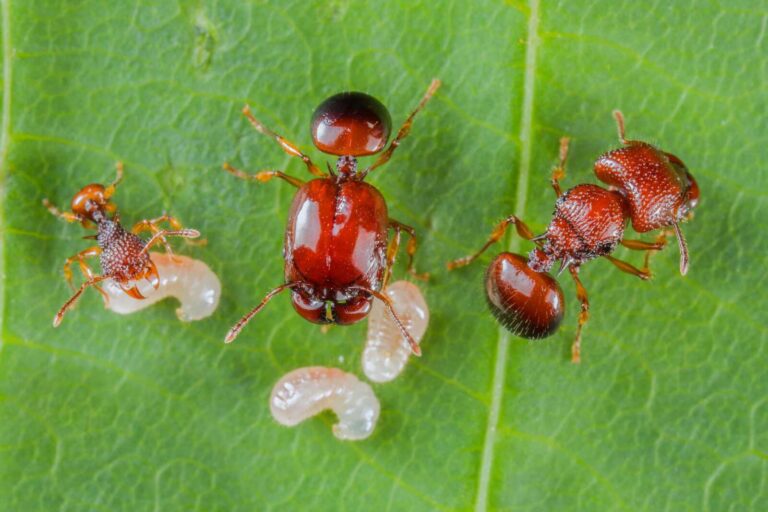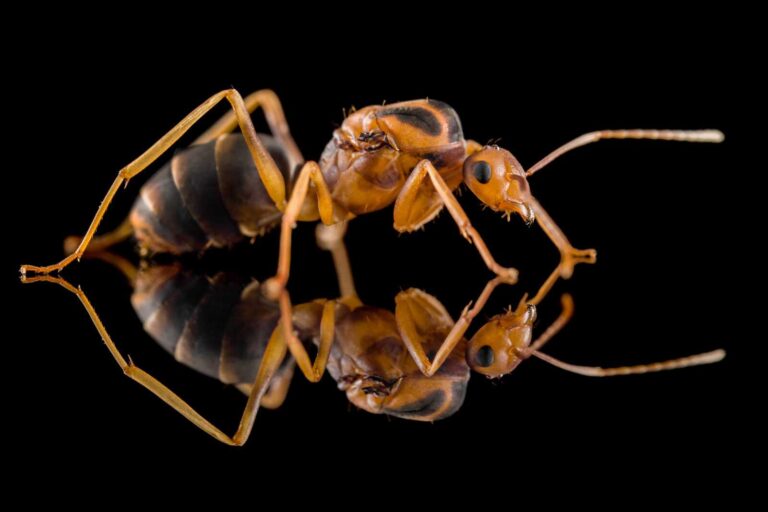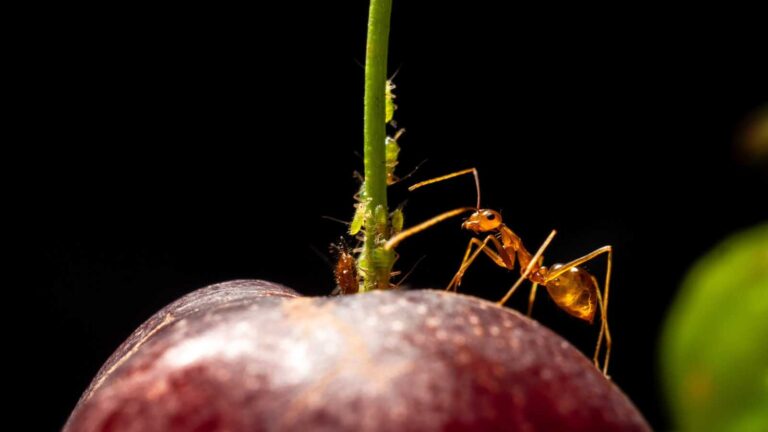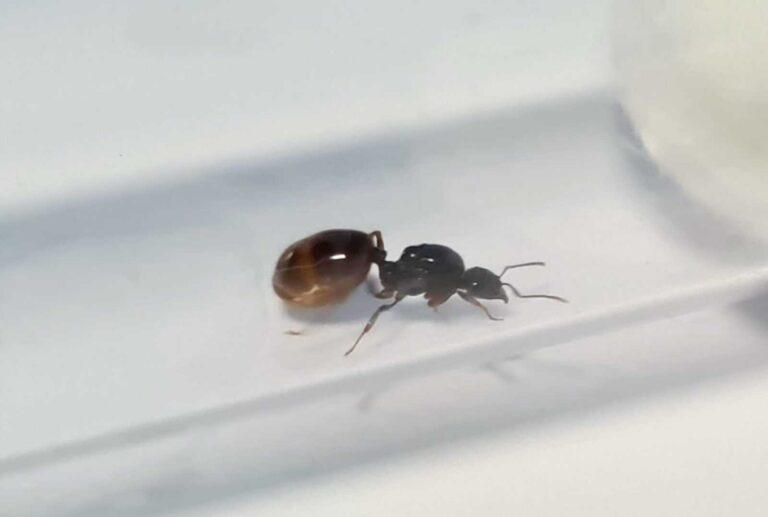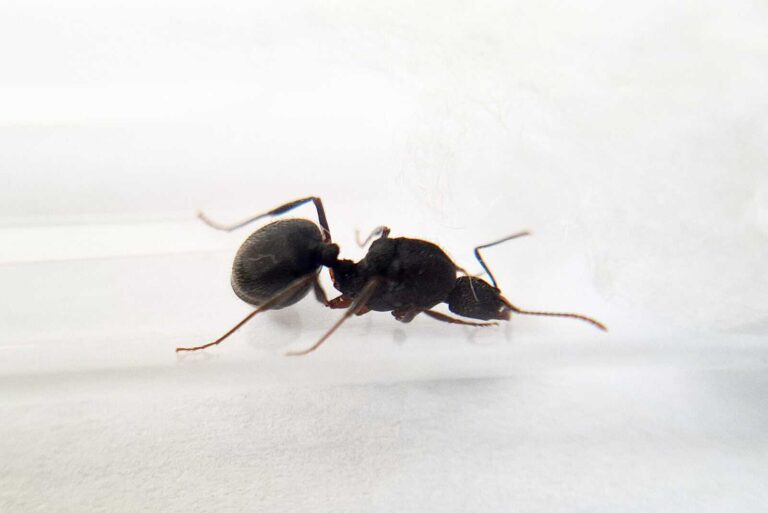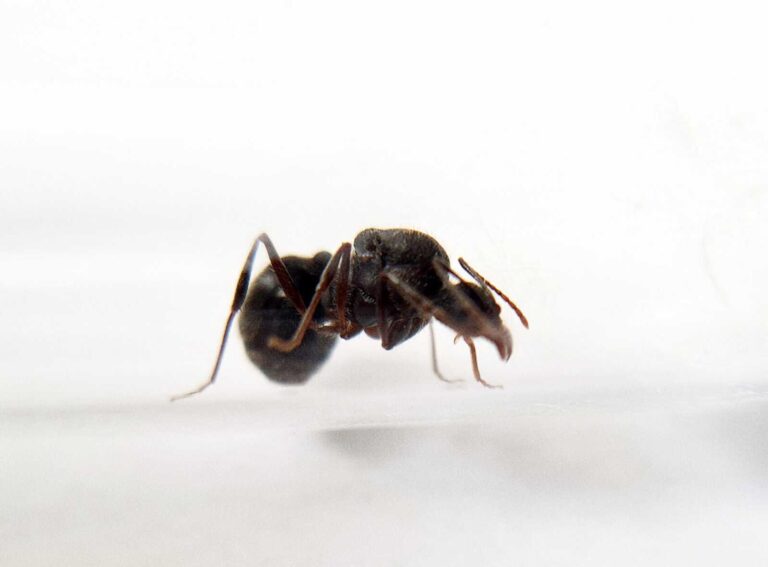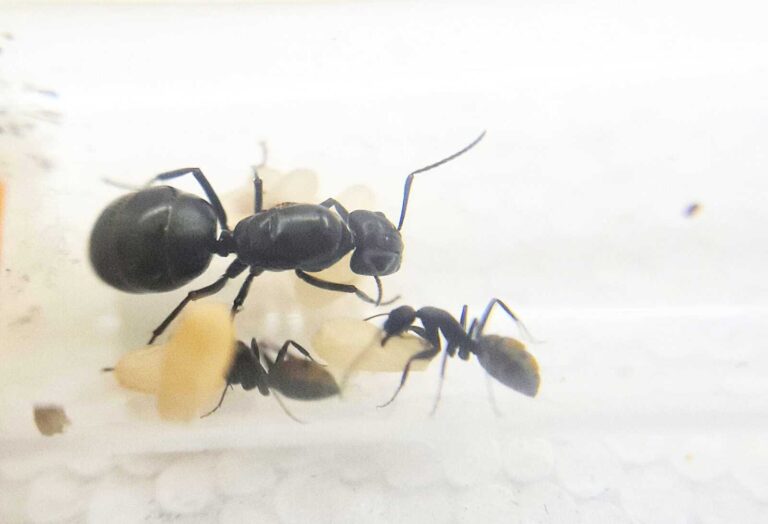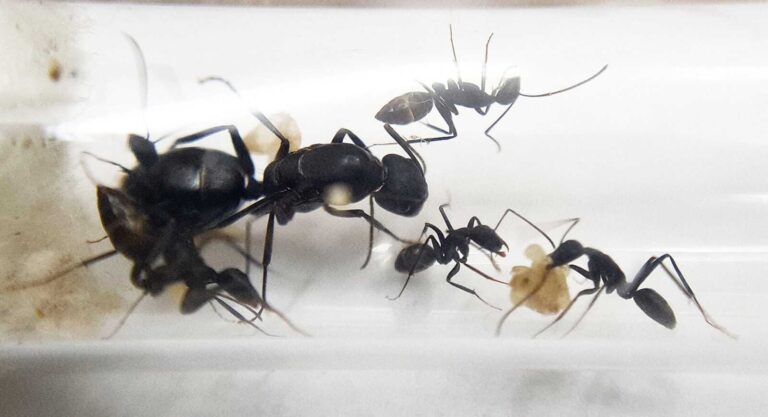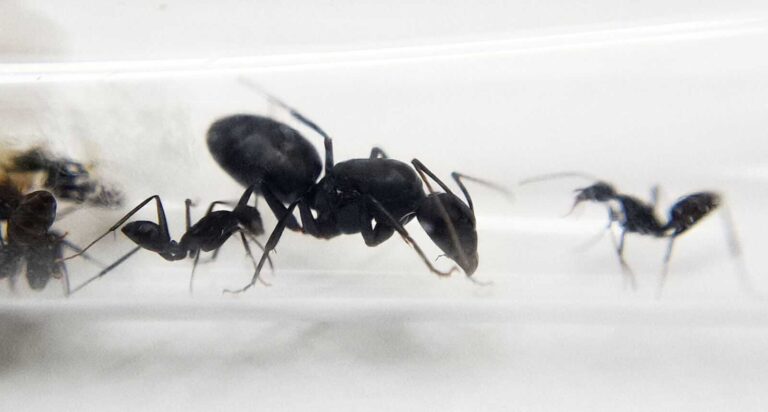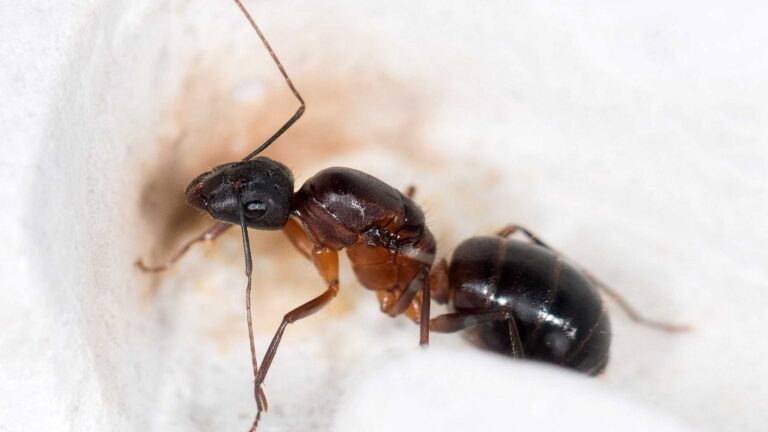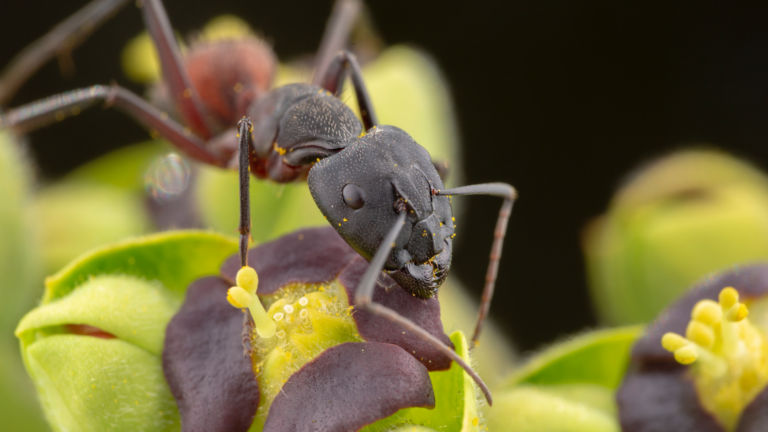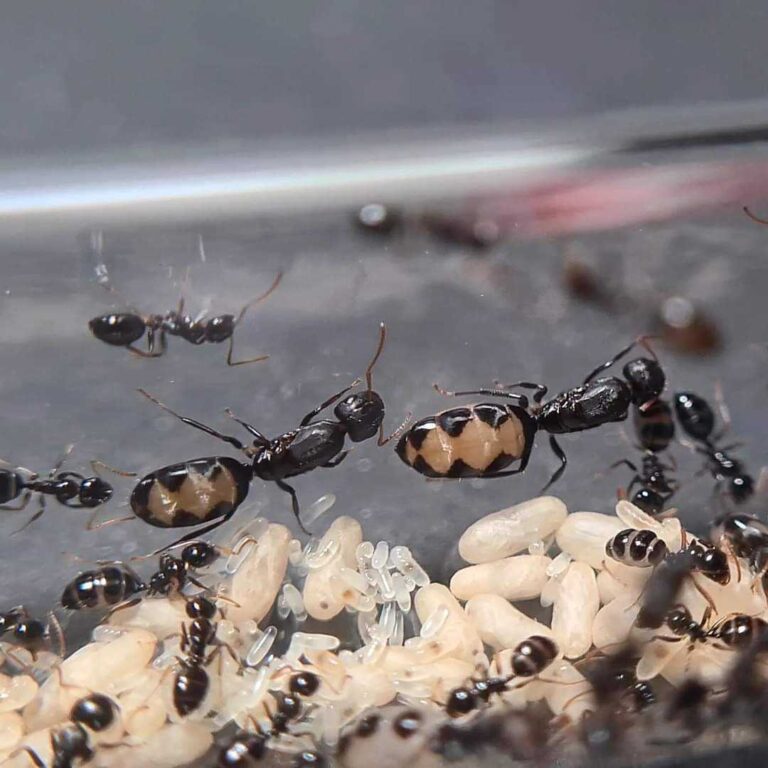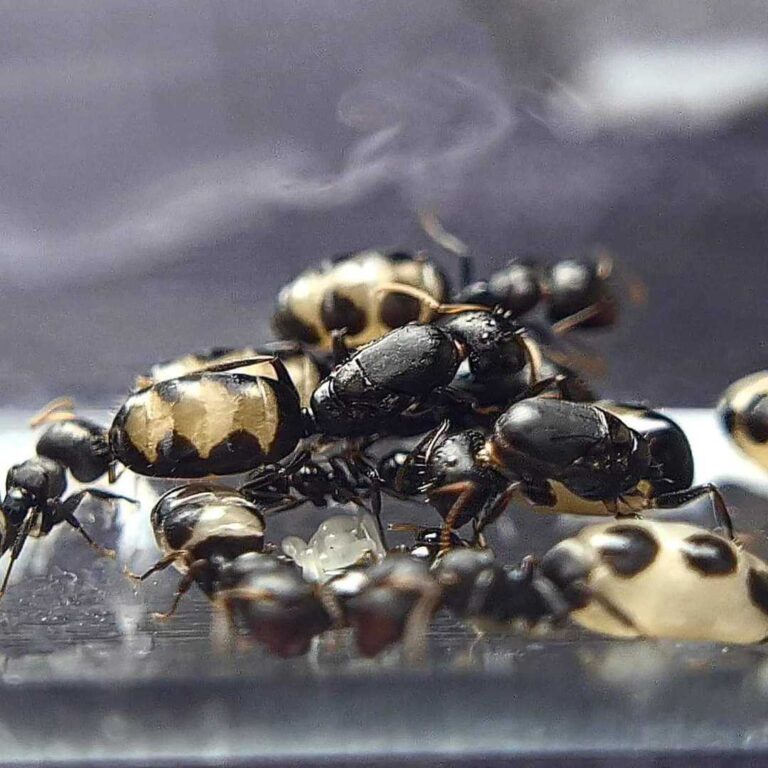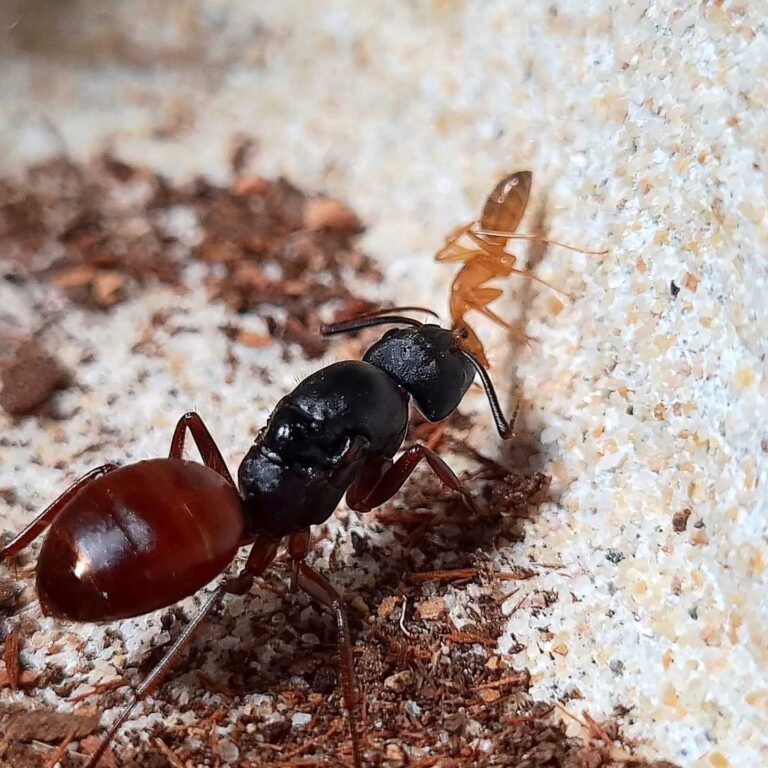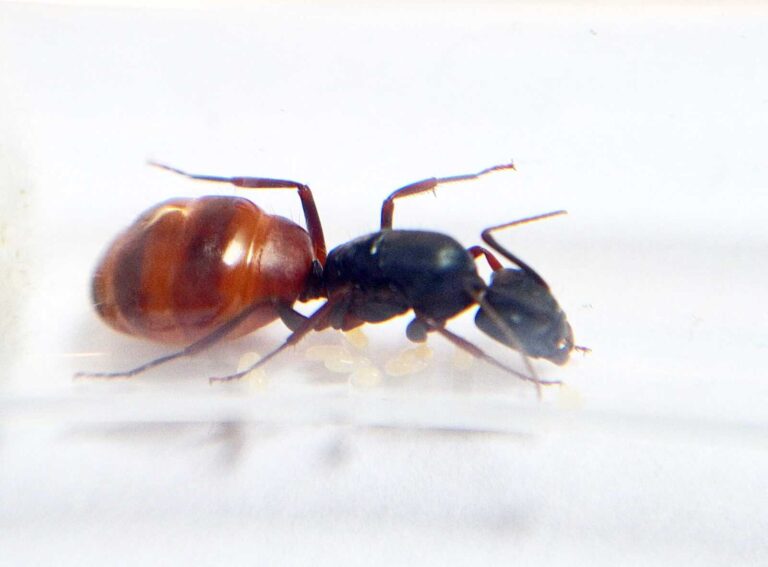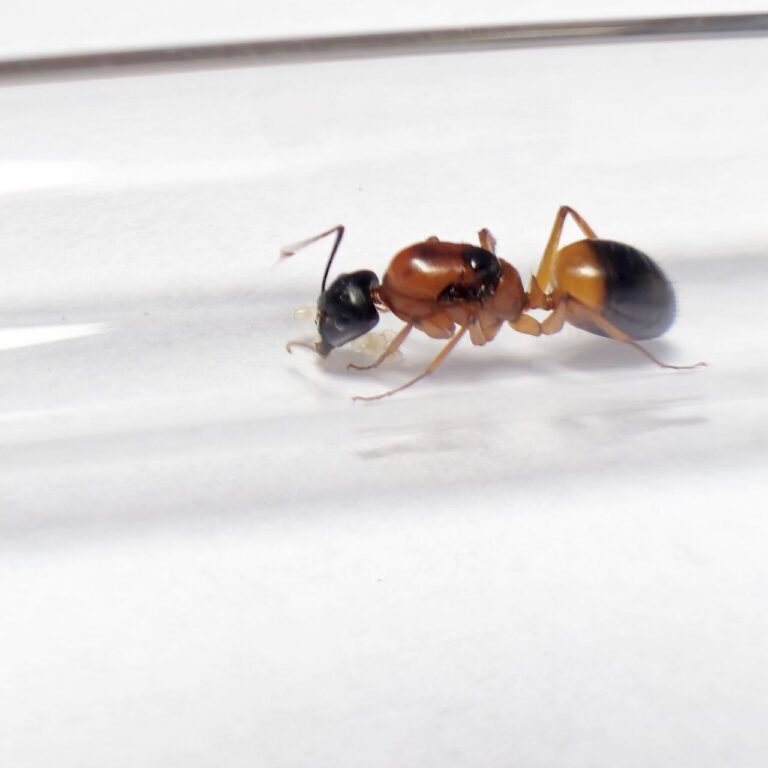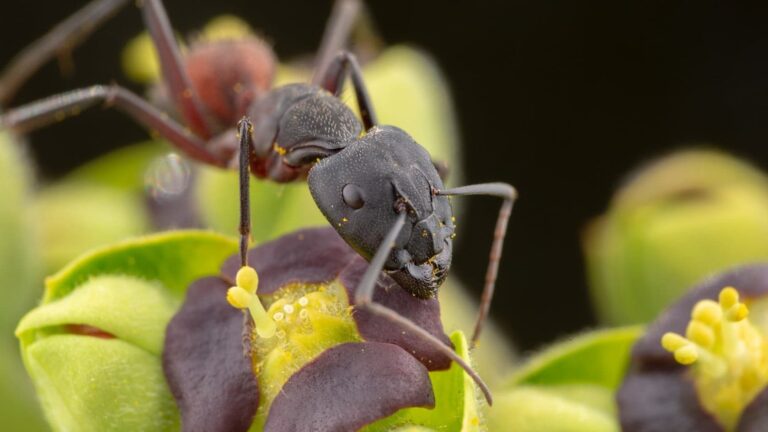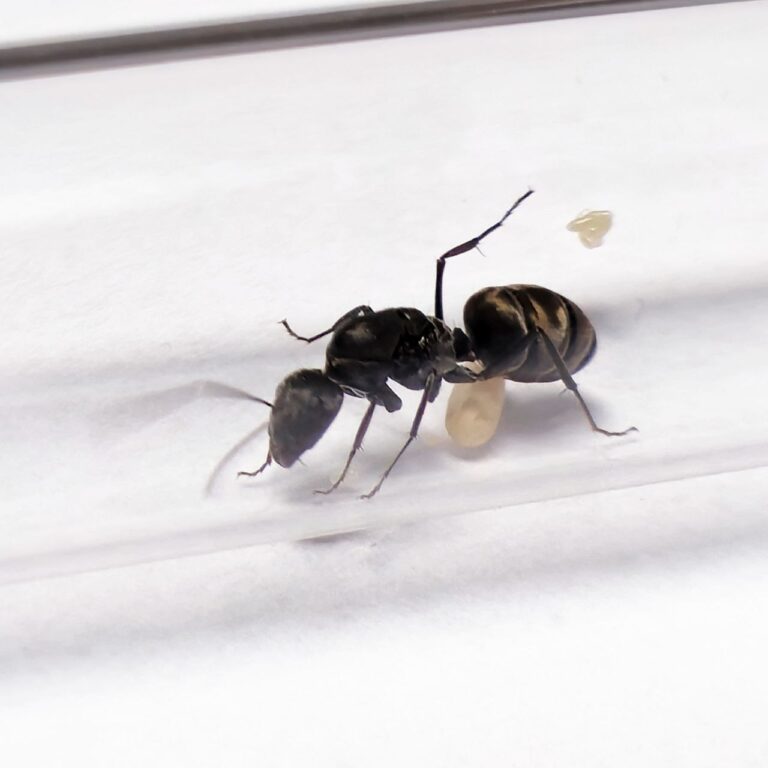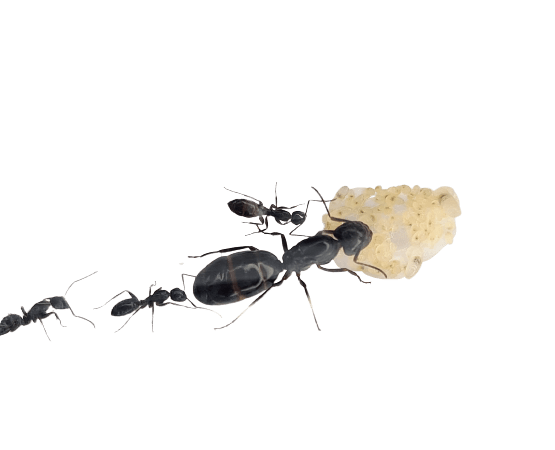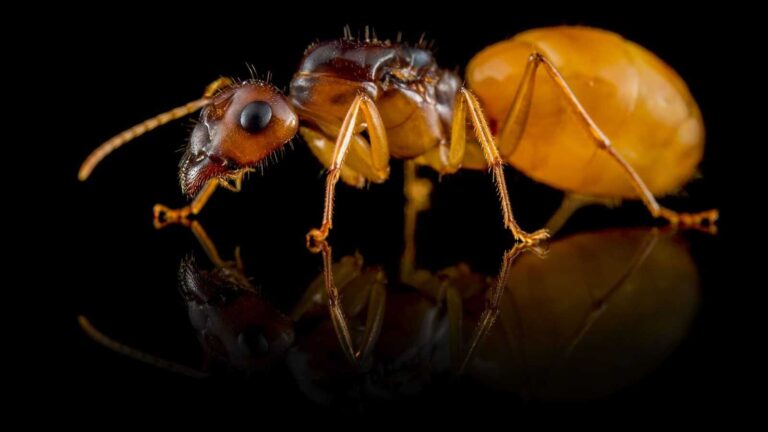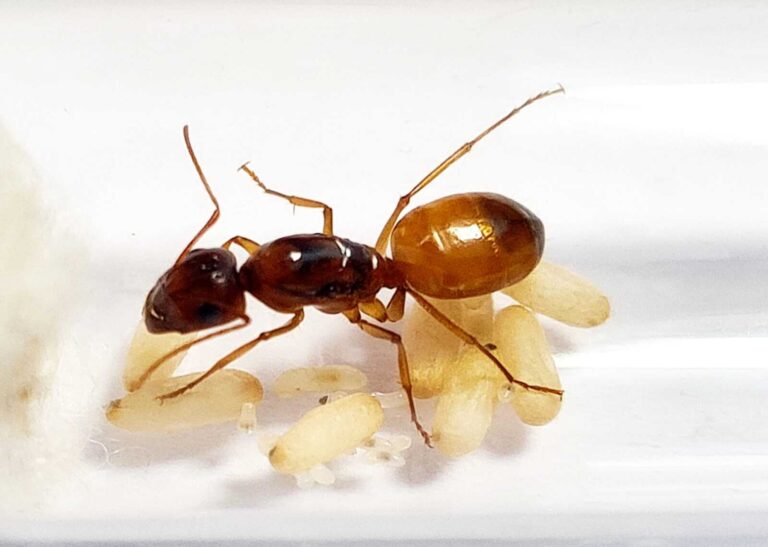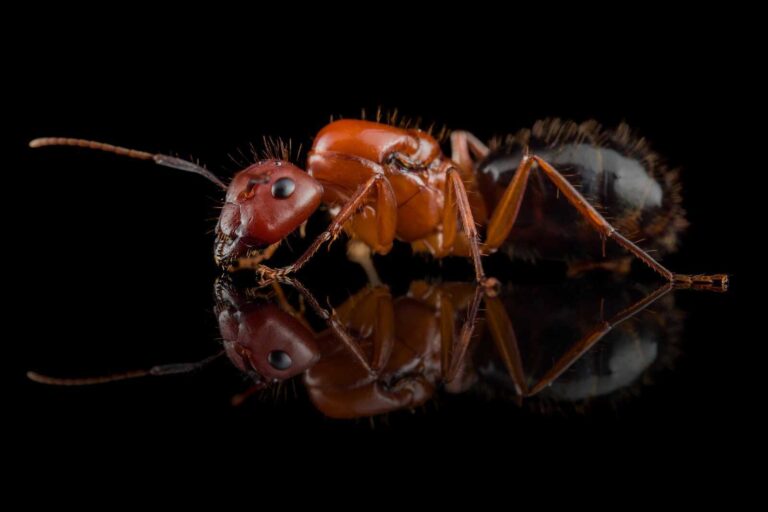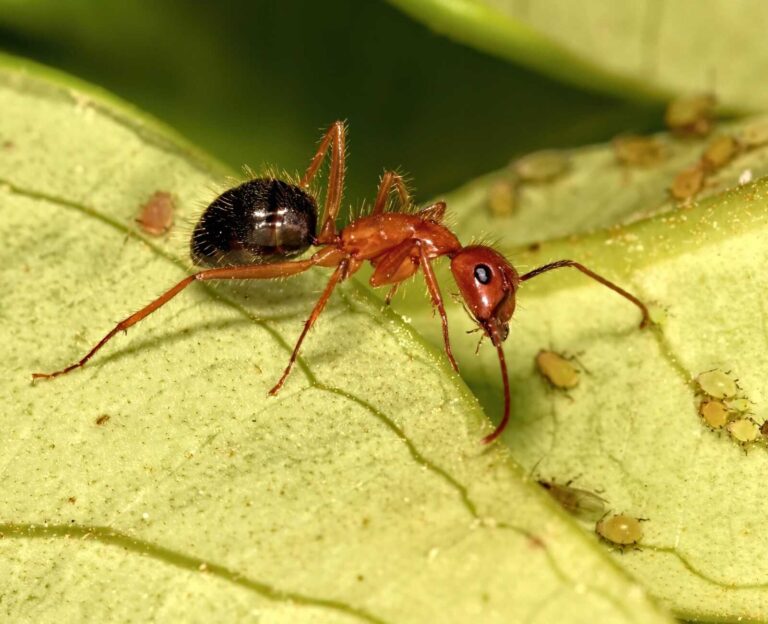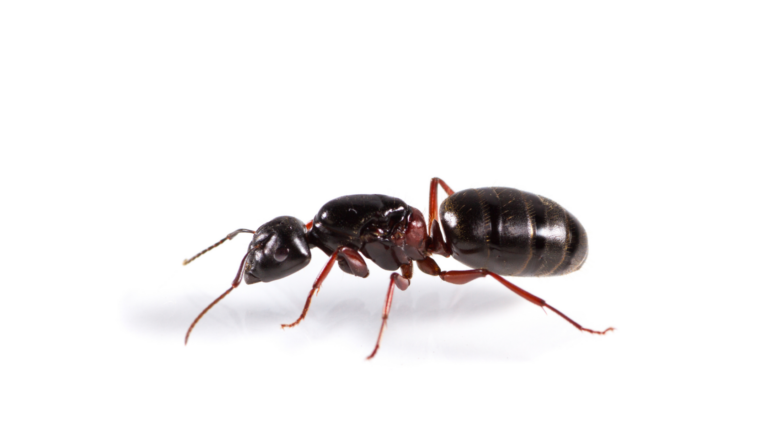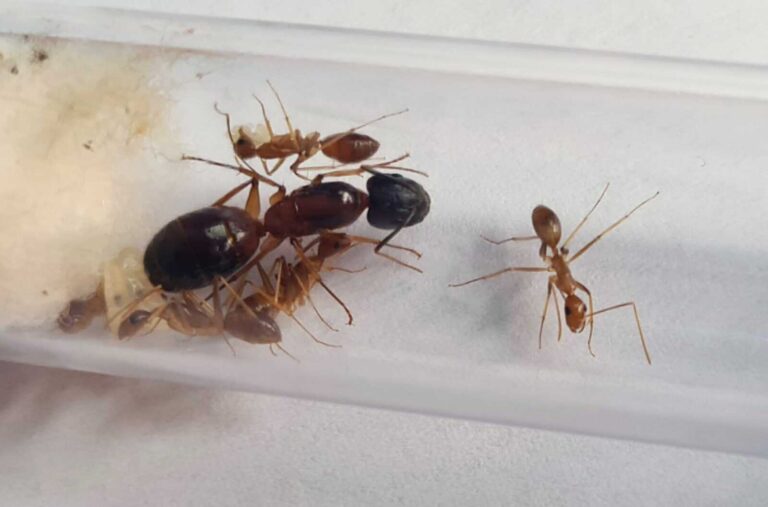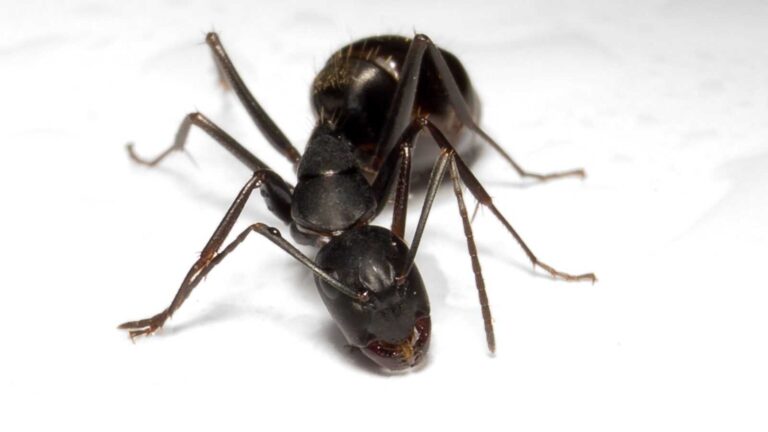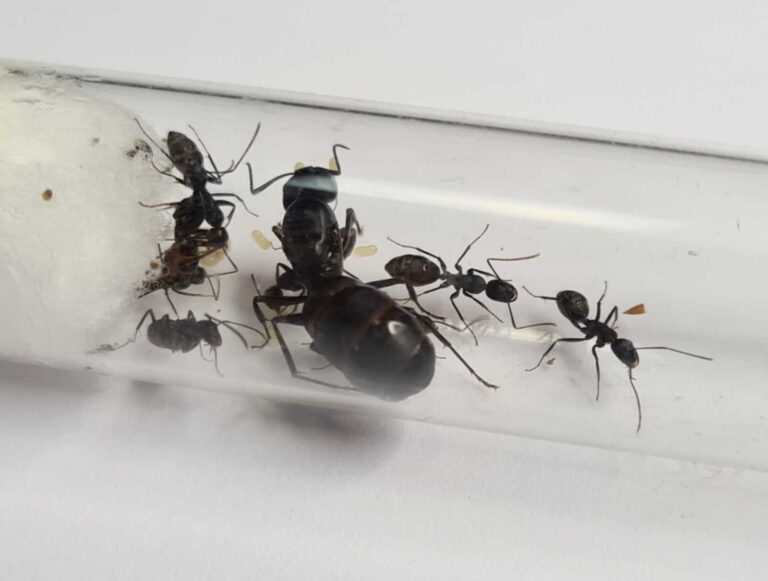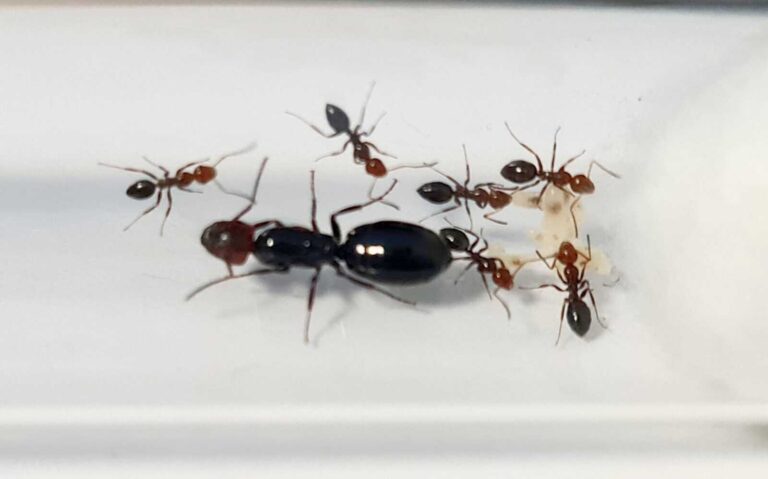Camponotus friedae is a large, slow-growing ant species of western Asia. Known for its polymorphic workers and striking coloration, it typically nests in dry wood or soil. Colonies are calm, nocturnal, and develop gradually, but queens are long-lived and highly resilient. Ideal for experienced keepers who prefer large, elegant ants with stable colony dynamics and moderate activity.
Showing 1–20 of 83 results
Ants – Live Ant Species, Queens, and Colonies for Sale
Product categories
Stock status
Filter by price
Behavior
Defficulty
Number of workers
- Queen 83
- Queen and 1-50 workers 2
- Queen and 1-3 workers 81
- Queen and 4-10 workers 81
- Queen and 11-20 workers 81
- Queen and 21-40 workers 81
- Queen and 41-60 workers 81
- Queen and 61-100 workers 63
- Queen and 51-100 workers 2
- Queen and 101-200 workers 16
- Queen and 201-500 workers 6
- Queen and 501-1000 workers 3
- 2 Queens 12
- 2 Queens and 1-50 workers 1
- 2 Queens and 1-3 workers 11
- 2 Queens and 4-10 workers 11
- 2 Queens and 11-20 workers 11
- 2 Queen and 21-40 workers 11
- 2 Queens and 41-60 workers 11
- 2 Queens and 61-100 workers 7
- 2 Queens and 101-200 workers 5
- 2 Queens and 51-100 workers 1
- 2 Queens and 201-500 workers 2
- 2 Queens and 501-1000 workers 1
- 3 Queens 8
- 3 Queens and 1-50 workers 1
- 3 Queens and 1-3 workers 7
- 3 Queens and 4-10 workers 7
- 3 Queens and 11-20 workers 7
- 3 Queens and 21-40 workers 7
- 3 Queens and 41-60 workers 7
- 3 Queens and 61-100 workers 4
- 3 Queens and 51-100 workers 1
- 3 Queens and 101-200 workers 2
- 3 Queens and 201-500 workers 2
- 3 Queens and 501-1000 workers 1
Origin
Filter by size
MicroMicro 2
SmallSmall 12
MediumMedium 45
LargeLarge 20
HugeHuge 2
Wintering
Ants
Acanthomyrmex thailandensis
299,90 zł – 999,90 złPrice range: 299,90 zł through 999,90 złAcanthomyrmex thailandensis is a species of ant that is polygynous and has colonies of up to 1000 workers. The development rate is medium and the ants vary in size, with the queens measuring 4-6 mm, workers measuring 3-4 mm, and majors measuring 5-8 mm. They are brown-red in color and their nutrition includes food insects, syrup, fruit, vegetables, jelly, and cooked chicken.
Select options
This product has multiple variants. The options may be chosen on the product page
Anoplolepis gracilipes
Rated 5.00 out of 5
199,90 zł – 819,90 złPrice range: 199,90 zł through 819,90 złThe “yellow crazy ant” is a fast-developing species with a polygynous colony type. With a colony size of up to 500,000, the queen measures 9-11mm in size while the workers measure 4-5mm. The ants have predominantly yellow coloration, while their diet consists of food insects and syrup.
Select options
This product has multiple variants. The options may be chosen on the product page
Aphaenogaster dulcineae
59,90 zł – 149,90 złPrice range: 59,90 zł through 149,90 złAphaenogaster dulcineae is a monogynous ant species with several thousand workers. They have a medium development speed and their queen measures 6-9 mm while the workers range from 3-5.5 mm. They have a brown top and yellow bottom coloration. Their nutrition includes food insects, syrup, fruits, vegetables, jelly, and cooked chicken without bones.
Select options
This product has multiple variants. The options may be chosen on the product page
Aphaenogaster geei
169,90 zł – 369,90 złPrice range: 169,90 zł through 369,90 złAphaenogaster geei is a monogynous ant species with colony sizes of up to 5000 workers. They have a medium development rate and the queen is 11-13mm in size while the workers are 5-9mm. The queen is black in color and the workers are chestnut. Their nutrition consists of food insects, syrup, fruit, vegetables, jelly, and cooked chicken without salt.
Select options
This product has multiple variants. The options may be chosen on the product page
Camponotus aeneopilosus
399,90 zł – 709,90 złPrice range: 399,90 zł through 709,90 złCamponotus aeneopilosus is a monogynous ant species with colonies of up to 5000 workers. They develop quickly and have a size range of 14-16mm for queens, 6-9mm for workers, and 8-12mm for major workers. These black ants require a diet of food insects, syrup, fruits, vegetables, jelly, and cooked chicken without salt.
Select options
This product has multiple variants. The options may be chosen on the product page
Camponotus alii
459,90 zł – 729,90 złPrice range: 459,90 zł through 729,90 złThe Camponotus alii ant species is a monogynous colony with a fast development speed and a size of up to 5000 workers. The queen measures 16-19mm, workers measure 6-9mm, and majors measure 8-14mm. They have a black color and their diet includes food insects, syrup, fruits, vegetables, jelly, and cooked chicken without salt.
Select options
This product has multiple variants. The options may be chosen on the product page
Camponotus barbaricus
89,90 zł – 229,90 złPrice range: 89,90 zł through 229,90 złCamponotus barbaricus is a monogynous ant species with colonies of up to 10,000 workers. The development rate is medium and the size ranges from 6-17mm. They have a glossy black color with a reddish veil. Their nutrition consists of food insects, syrup, fruit, vegetables, jelly, and cookies.
Select options
This product has multiple variants. The options may be chosen on the product page
Camponotus bellus
529,90 zł – 829,90 złPrice range: 529,90 zł through 829,90 złThe Camponotus bellus ant is a polygynous species with colony sizes of up to 10,000 workers. They have a medium development rate and come in varying sizes: queens are 5-8mm, workers are 3-5mm, and majors are 4-7mm. They are black with a yellow picture on their abdomen and their diet consists of food insects, syrup, fruits, vegetables, jelly, and cooked food.
Select options
This product has multiple variants. The options may be chosen on the product page
Camponotus Ca02
Rated 5.00 out of 5
499,90 zł – 679,90 złPrice range: 499,90 zł through 679,90 złCamponotus CA02 is a monogynous ant colony with a medium development speed. The colony can have up to 5000 workers. The queen measures 19-23 mm, workers measure 7-14 mm, and majors measure 14-22 mm. They have a black head and chest with an orange-yellow belly. Their nutrition includes insect food, syrup, fruits, vegetables, and jelly.
Select options
This product has multiple variants. The options may be chosen on the product page
Camponotus consobrinus
529,90 zł – 669,90 złPrice range: 529,90 zł through 669,90 złCamponotus consobrinus is a monogynous ant species with colonies reaching up to 20,000 workers. They exhibit a moderate to fast development speed. Queens typically measure around 16–18 mm in length, while workers range from 6 to 12 mm, showing noticeable polymorphism. This species is known for its striking appearance: the head and thorax are orange to reddish-brown, while the gaster is glossy black, creating a sharp bicolored contrast. They primarily feed on insect prey, sugary substances like honey-water or syrup, jelly, fruit, and protein-rich foods such as cooked chicken or egg.
Select options
This product has multiple variants. The options may be chosen on the product page
Camponotus cruentatus
89,90 zł – 229,90 złPrice range: 89,90 zł through 229,90 złThe Camponotus cruentatus is a monogynous ant species with a colony size of up to 10,000 individuals. They have a medium development rate and come in various sizes, with queens measuring around 14-16 mm and workers and majors ranging from 6-14 mm. They have a dark gray-black color with orange segments on their stomach. Their nutrition consists of food insects and syrup.
Select options
This product has multiple variants. The options may be chosen on the product page
Camponotus dolendus
189,90 zł – 359,90 złPrice range: 189,90 zł through 359,90 złCamponotus dolendus is a monogynous ant species with colony sizes reaching up to 8,000–12,000 workers in mature nests. They are known for their moderate to fast development speed, depending on environmental conditions.
Select options
This product has multiple variants. The options may be chosen on the product page
Camponotus fallax
89,90 zł – 199,90 złPrice range: 89,90 zł through 199,90 złCamponotus fallax is a monogynous ant species with colonies that can reach up to 300 workers. They have a medium development rate and are characterized by their glossy black color. The queen is 9-12mm in size, while workers and majors range from 6-9mm. They require a diet consisting of food insects, syrup, fruits, vegetables, jelly, and cooked chicken (unsalted).
Select options
This product has multiple variants. The options may be chosen on the product page
Camponotus fedtschenkoi
Rated 5.00 out of 5
89,90 zł – 269,90 złPrice range: 89,90 zł through 269,90 złCamponotus fedtschenkoi is a monogynous ant species with a colony size of around 4000 workers. Its development speed is considered medium. The queen measures 12-14mm, workers range from 5-9mm, and majors measure 10-15mm. Workers and soldiers are typically yellow in color, but some soldiers may have a black head or both a black head and chest. Queens have a black or brown head and breast with a yellow belly.
Select options
This product has multiple variants. The options may be chosen on the product page
Camponotus floridanus
Rated 5.00 out of 5
389,90 zł – 779,90 złPrice range: 389,90 zł through 779,90 złCamponotus floridanus is a monogynous ant species with a colony size ranging from 5,000 to 20,000 workers. They have a very fast development speed. The queen ant is 14-17 mm in size, while the workers range from 4-9 mm and majors are 11-13 mm. They have a distinct coloration with a reddish-orange head, bright orange mesosome and legs, and deep black punctuation. Their nutrition consists of food insects.
Select options
This product has multiple variants. The options may be chosen on the product page
Camponotus friedae
319,90 zł – 449,90 złPrice range: 319,90 zł through 449,90 zł
Select options
This product has multiple variants. The options may be chosen on the product page
Camponotus herculeanus
65,90 zł – 219,90 złPrice range: 65,90 zł through 219,90 złThe Camponotus herculeanus is a monogynous ant species with colony sizes of up to 5000 workers. They have a slow development rate. The queen measures 16-18 mm, workers measure 8-12 mm, and the majors measure 11-15 mm. They have a red-breast and black head and belly. Their nutrition includes food insects, syrup, fruit, vegetables, and jelly.
Select options
This product has multiple variants. The options may be chosen on the product page
Camponotus irritans
Rated 5.00 out of 5
159,90 zł – 309,90 złPrice range: 159,90 zł through 309,90 złThe Camponotus irritans ant colony is monogynous and can have up to 5000 workers. They have a medium development rate. The queen ant size is 12-14mm, while the workers are 5-8mm and the majors are 7-11mm. The ants have a dark brown/black head, brown to yellowish chest, and brown to dark brown stomach. Their nutrition consists of food insects such as cockroaches and crickets, as well as syrup made from water and honey.
Select options
This product has multiple variants. The options may be chosen on the product page
Camponotus japonicus
99,90 zł – 189,90 złPrice range: 99,90 zł through 189,90 złThe Camponotus japonicus is a monogynous ant species with a colony size of up to 5000 workers. They have a medium development rate and are primarily black in color. Their nutrition consists of food insects, syrup, fruits, vegetables, jelly, and cooked chicken without salt. The queen measures 15-18mm while workers range from 6-9mm and majors from 9-14mm.
Select options
This product has multiple variants. The options may be chosen on the product page
Camponotus lateralis
99,90 zł – 319,90 złPrice range: 99,90 zł through 319,90 złCamponotus lateralis is a monogynous ant species with a colony size of up to 1000–2000 workers. The development rate of the species is medium. The queen measures 10–12 mm, workers 4–7 mm, and majors 6–9 mm. They have a shiny black head and gaster with a reddish-orange thorax, creating a striking color contrast. Their diet includes food insects, syrup, fruits, vegetables, jelly, and cooked meat.
Select options
This product has multiple variants. The options may be chosen on the product page
What Are Live Ants for Ant Farms
Live ants are the heart of any ant farm - they bring your formicarium to life, displaying fascinating behaviors, teamwork, and colony growth. Choosing the right species is essential for a healthy and thriving colony.
We offer a variety of ant species, from beginner-friendly options to more advanced species with specific care needs. All ants are shipped according to regulations and arrive safely in secure containers.
How To Choose the Right Ant Species
- Experience level: beginners often start with hardy species that adapt to a range of conditions.
- Climate compatibility: choose species that thrive in your local temperature and humidity range.
- Colony behavior: some ants are more active and aggressive, while others are calm and slow-growing.
- Nesting needs: match the species' humidity and space requirements to your formicarium type.
Tip: research the species’ diet, temperature tolerance, and growth speed before purchase.
Ant Care Tips
- Provide fresh food - a mix of protein sources and carbohydrates.
- Ensure constant access to clean water via test tubes or reservoirs.
- Maintain proper humidity and temperature based on species needs.
- Avoid overcrowding - upgrade the nest as the colony grows.
- Keep the outworld clean to prevent mold and pests.
Frequently Asked Questions About Ants
Do you ship ants with formicaria?
No - ants and formicaria are shipped separately due to legal regulations and to ensure you can choose the species best suited to your conditions and experience level.
Which ant species is best for beginners?
Hardy, slow-growing species that tolerate a wide range of conditions are best for beginners. They are easier to care for and less sensitive to small mistakes in feeding or humidity control.
How are live ants shipped safely?
Ants are packed in secure test tubes or containers with moisture and food for the journey. Shipments follow regulations to ensure both safety and the ants' well-being.
Can I mix different ant species in one formicarium?
No - mixing species leads to fights, stress, and often the death of one colony. Each formicarium should house only one species.
How long can ants stay in shipping containers?
Most species can safely stay in their shipping tubes for several days, but it is best to transfer them to a prepared formicarium as soon as possible.
Do I need a queen to start a colony?
Yes - a queen is necessary for a growing, self-sustaining colony. Without a queen, worker ants will eventually die out.
Recently Viewed Products


